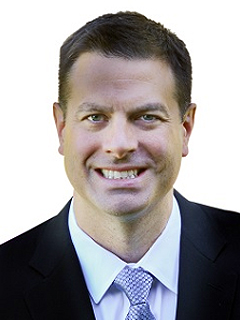Manufacturing the back office of the future
KPMG helped a FORTUNE 50 industrial manufacturing company implement payroll transformation with Oracle Cloud HCM.

KPMG helped a FORTUNE 50 industrial manufacturing company implement payroll transformation with Oracle Cloud HCM.
Client
A fortune 50 company
Sector
Industrial manufacturing
Project
Payroll transformation with Oracle Cloud HCM
A global industrial manufacturing powerhouse with a 170-year history, this company is behind innovations in everything from telegraphy to renewable energy and medical technology. But with such a large, diversified business came a complex internal architecture and highly customized, aging back-office systems. To continue as a forward-thinking organization, they needed a future-facing solution. Taking their HR and payroll solutions to the cloud would improve consistency, efficiency, and business strategy—extending that innovative outlook from products to processes.
Accuracy was of the essence in this deployment. Together, KPMG and this client built a customized engine to analyze and streamline data for compatibly with Oracle Cloud.
Bringing the technology of tomorrow—smart cities, sustainable energy, cybersecurity, and more—to regions around the world, this multidisciplinary company took a similar innovative approach to their North American back office. Managing all HR operations on a maturing, highly customized platform offered little opportunity for future technical support and scalability without significant cost to the company. Company leaders saw that moving to the cloud could unlock opportunities to advance their processes, staffing models, roles and responsibilities, and data and analytics. Beyond that, adopting an out-of-the-box solution would allow them to invest in all elements of their back office rather than on the software alone.
Thinking ahead, KPMG worked with this client to evaluate back-office products. Moving forward with Oracle Cloud HCM, the company migrated tens of thousands of active employees in North America to the new system. Accuracy was of the essence in this deployment, with a large union population, legacy payrolls, and many different time captures and general ledgers in need of integration. Together, we built a customized engine to analyze and streamline data for compatibly with Oracle Cloud.
1
2
3
By better understanding the legacy data, the company could determine how it affects payroll processes and how it could be standardized through best practices.
By moving to Oracle Cloud HCM, the company achieved what was once the largest Oracle Fusion Payroll in North America. Incorporating a heavily unionized workforce and many legacy payrolls into a standardized system and streamlining data and operations, they were able to:
1
2
3
Understanding uncomplicates initiatives
Before beginning a large-scale transformation project, take the time to analyze business processes and data. Understanding them and determining what you want to achieve greatly reduces the complexity and cost of your project.
Good things come to those who don’t wait
Change management and training don’t have to be reserved for the end of a project. Beyond making systems changes, the end user must change too. Focusing on change management from the start brings everyone on board for lasting improvement.
Change for strategy’s sake
The best organizational changes are strategic. Consider what can be accomplished through transformation, not just what looks like a good deal on the surface.

Not finding what you are looking for?